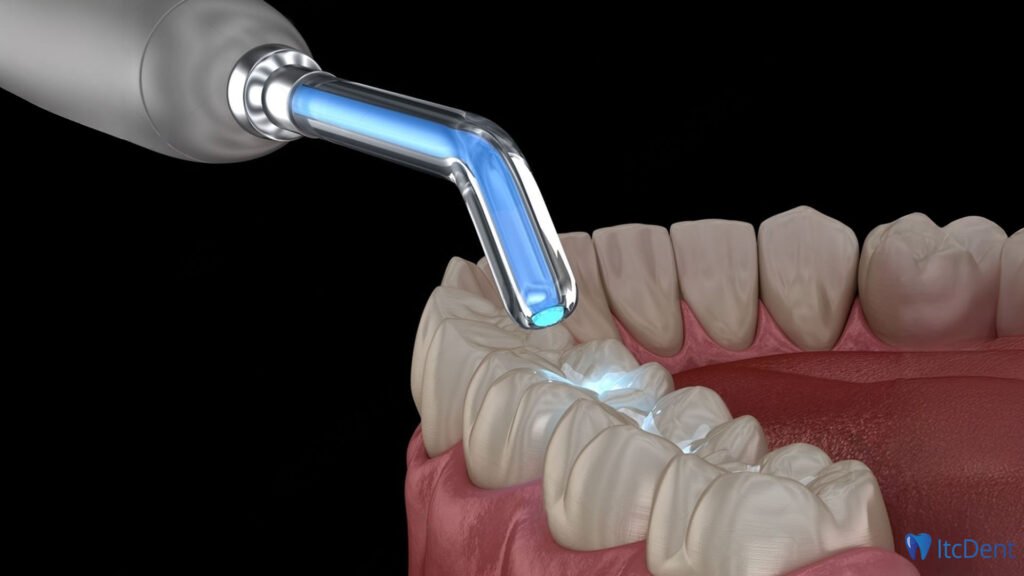Dental Filling
Dental filling is one of the most frequently performed procedures in dental practice. It is used to repair tooth damage caused by tooth decay or trauma. In addition to playing an important role in our daily lives, teeth also have a great impact on our general health. While healthy teeth provide effective chewing function, they also have an important place in terms of aesthetics. However, over time, tooth decay or damage may occur for various reasons. This situation both reduces the functionality of the teeth and can cause discomfort such as pain.
Dental filling is a very effective method in the treatment of such conditions. Thanks to the filling process, the lost structure of the tooth is rebuilt and the normal function of the tooth is restored. This procedure is not only limited to aesthetic concerns, but is also of critical importance in terms of protecting dental health. Filled teeth become more resistant to decay or other types of damage, and bigger problems that may occur in the future are prevented.
What is a Dental Filling?
Dental filling is a treatment method used in dentistry to repair the internal structure of decayed or damaged teeth. This process begins by first cleaning the rotting or damaged area. The dentist tries to preserve healthy tooth tissue by carefully removing decayed or damaged tissue. The cleaned area is filled with a suitable filling material, allowing the tooth to regain its former function.
Dental filling is performed using various filling materials that have properties similar to the natural structure of the tooth. These substances are designed to restore the aesthetics and function of the tooth. The most commonly used filling materials include amalgam, composite resin, ceramic and gold. Each filler has its own advantages and disadvantages.
- Amalgam: Usually used on back teeth, amalgam is known for its durability and longevity. It is especially preferred in the treatment of large caries, but it is less aesthetically attractive.

- Composite Resin: Composite resin, which offers a more aesthetically pleasing appearance, can be prepared in the natural color of the tooth. For this reason, it is widely preferred in front teeth. Additionally, it creates a strong bond thanks to its ability to adhere to the surface of the tooth.
- Ceramic: Ceramic fillings offer an appearance very similar to natural tooth tissue. It is an ideal choice for patients with high aesthetic demands, but is generally more expensive.
- Gold: Gold fillings are known for their durability and longevity. It may not be aesthetically striking, so it is generally preferred on back teeth.
Dental filling not only preserves dental health, but also restores the function and aesthetics of the tooth. After cavity treatment, patients often experience a decrease in pain and discomfort. Filled teeth continue to function in the same way as healthy teeth, allowing patients to chew, speak and continue their daily activities with ease.
Why Is a Dental Filling Necessary?
Dental filling is of great importance in protecting dental health and preventing painful situations. First of all, if left untreated, tooth decay can progress and lead to tooth loss; The filling process stops this progression by cleaning the rotting area. Additionally, it helps relieve pain and sensitivity commonly seen in decaying teeth; After the filling, patients usually feel that the pain in their teeth has decreased or disappeared completely.
Considering that damaged teeth may affect the normal chewing function, the filling process restores the structure and function of the tooth, allowing patients to eat comfortably. In addition, aesthetic filling materials such as composite fillings can imitate the natural color of the tooth, which aesthetically improves the appearance of the filled tooth. Therefore, dental fillings play a critical role in maintaining dental health, both functionally and aesthetically.
Dental Filling Process
The dental filling process usually consists of several stages:
- Examination and Diagnosis: In the first stage, the dentist examines your teeth and determines the areas where there are caries or damage. If necessary, x-rays are taken.
- Anesthesia Application: Local anesthesia is applied to avoid discomfort during the filling process. This ensures that the procedure is comfortable.
- Caries Removal: After the patient is relaxed under the effect of anesthesia, the dentist cleans the decayed area. At this stage, the infected tissues inside the tooth are completely removed.
- Application of Filling Material: Appropriate filling material is placed on the cleaned area. This material is shaped according to the shape and size of the tooth.
- Finishing Procedures: After the filling is applied, the dentist ensures that the filling is placed correctly and smoothes the biting surface of the tooth.
- Check-Up Appointment: After the procedure is completed, your dentist will recommend a follow-up appointment to check the condition of the filling.

Aesthetic Tooth Filling
Aesthetic dental filling has an important place in dentistry in terms of both functionality and appearance. Traditional filling materials can often be unsatisfactory in appearance; Therefore, aesthetic filling options aim to achieve a more aesthetic result by using materials compatible with the natural color of the teeth. Composite resin filling, which is especially preferred in front teeth, is an ideal solution to address the aesthetic concerns of patients. Since this material has properties similar to the natural structure of the tooth, it can be harmonized with the color and texture of the tooth.
Aesthetic dental filling application makes patients’ smiles look more pleasant and increases their self-confidence. The dentist reaches the healthy tissue by cleaning the damaged part of the tooth before applying the filling material. Then, the composite material of the appropriate color is placed inside the tooth and shaped with special techniques.
After the procedure, patients gain a natural appearance and the functions of their teeth are restored. Aesthetic dental filling is an important step in modern dentistry, protecting dental health while also prioritizing aesthetic appearance.


